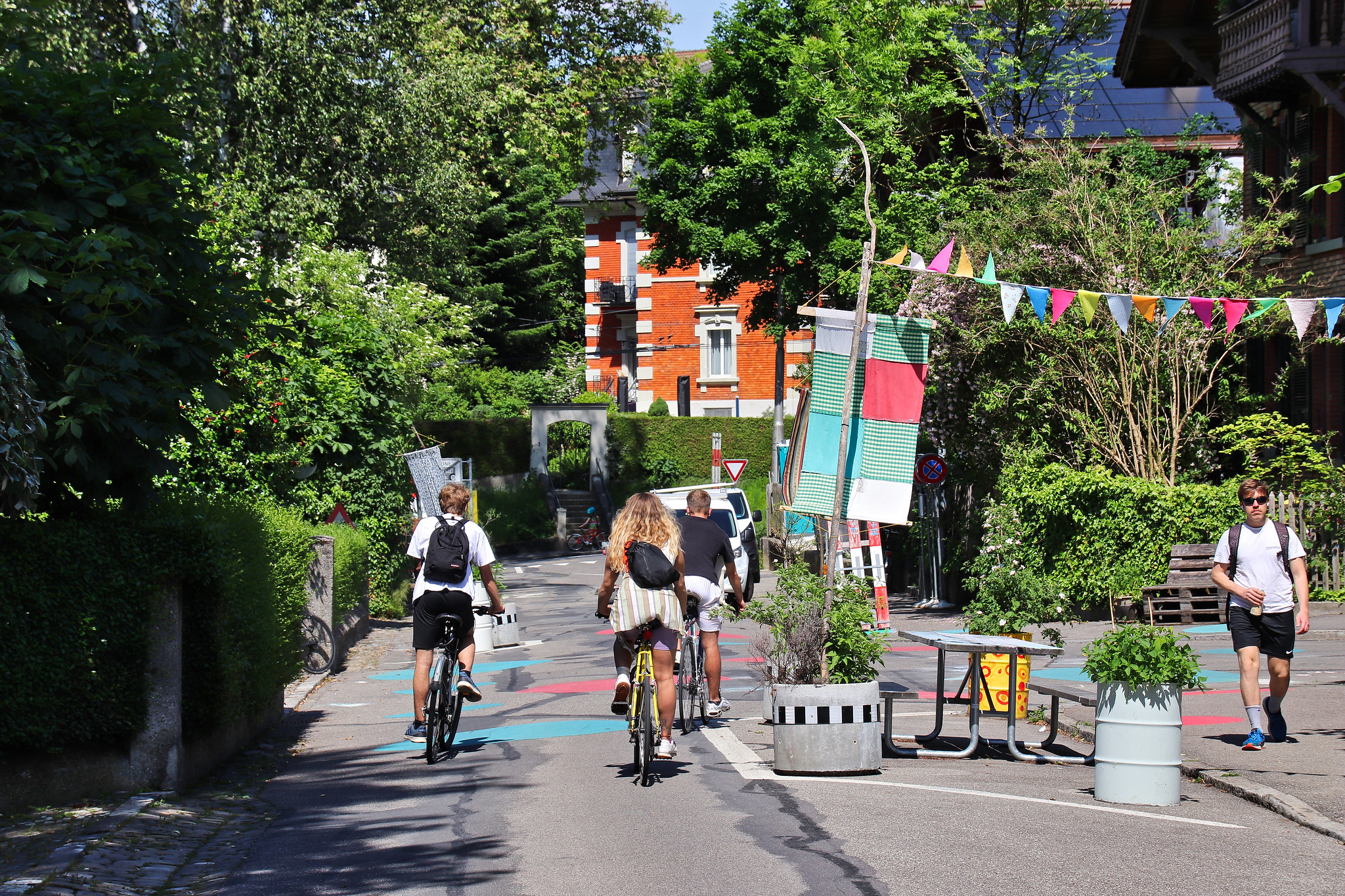Public space is a contested resource in cities. How are claims to public space negotiated? Patrick Rérat and Hannah Widmer (OUVEMA UNIL) have launched a call for papers for a special session they organise at the Swiss Geosciences Meeting 2022 (Lausanne, 19th November 2022).
 Shared zone, Gryphenhübeli, Bern © Rue de l'Avenir
Shared zone, Gryphenhübeli, Bern © Rue de l'Avenir
Public space has long been recognised as a realm where encounters with others take place, including fleetingly passing someone as well as more meaningful interactions and planned activities like cultural events or demonstrations. Recently, the pandemic has sparked new interest in public space’s capacity to provide space for encounters with like-minded people and strangers alike (Kasinitz 2020), and in its contribution to the physical and mental well-being of city dwellers.
We understand public space as situated and processual (Qian 2020) and as a stage where power relations are constantly (re-)negotiated (Lefebvre 1991). It may provide space for functions such as leisure, commercial activity, and manifestations of political opinions, and it serves as a space of passage and a resource for mitigating the effects of climate change.
In this session, we will discuss the role of public space in providing space for social cohesion (Aelbrecht and Stevens 2019), non-commodified (Madanipour 2020) and intercultural encounters (Ganji and Rishbeth 2020), more convivial forms of mobility such as walking or cycling (te Brömmelstroet et al. 2017) as well as green and open space in compact cities (Mouratidis 2018). We are interested in the environmental and social factors, and concrete artifacts and their affordances (Davis 2020) that shape encounters in public space.
We are seeking empirical and theoretical contributions that address the following questions:
- How can inclusive public space be planned and designed?
- Which factors foster conviviality and diversity in public space?
- How is space negotiated between different groups of users? Which practices are encouraged, tolerated or rejected?
- What are challenges in transitioning car infrastructure to more sociable, walkable and cyclable streetscapes?
- How can public space contribute to making cities more resilient to climate change (fighting heat islands, desealing of surfaces, etc.)?
- What role may tactical urbanism play in reallocating public space?
- In what ways is the reallocation and reappropriation of space contested?
Please send your abstract of no more than 250 words including a title, and the names, affiliations and email addresses of all authors to the session organisers (patrick.rerat@unil.ch, hannah.widmer@unil.ch) by August 15th, 2022.
The full set of calls for the stream of sessions «Cities, Regions, Economies» at the Swiss Geosciences Meeting can be found here.
References:
- Aelbrecht, P., & Stevens, Q. (Eds.). (2019). Public space design and social cohesion. An international comparison. London: Routledge.
- Davis, J. L. (2020). How Artifacts Afford: The Power and Politics of Everyday Things. https://doi.org/10.7551/mitpress/11967.001.0001
- Ganji, F., & Rishbeth, C. (2020). Conviviality by design: the socio-spatial qualities of spaces of intercultural urban encounters. URBAN DESIGN International, 25(3), 215–234. https://doi.org/10.1057/s41289-020-00128-4
- Kasinitz, P. (2020). Rending the “Cosmopolitan Canopy”: COVID–19 and Urban Public Space. City & Community, 19(3), 489–495. https://doi.org/10.1111/cico.12516
- Lefebvre, H. (1991). The production of space. Oxford, UK: Blackwell.
- Madanipour, A. (2020). Can the public space be a counterweight to social segregation? In S. Musterd (Ed.), Handbook of Urban Segregation (pp. 170–184). Cheltenham: Edward Elgar Publishing.
- Mouratidis, K. (2018). Is compact city livable? The impact of compact versus sprawled neighbourhoods on neighbourhood satisfaction. Urban Studies, 55(11), 2408–2430. https://doi.org/10.1177/0042098017729109
- Qian, J. (2020). Geographies of public space: Variegated publicness, variegated epistemologies. Progress in Human Geography, 44(1), 77–98. https://doi.org/10.1177/0309132518817824
- te Brömmelstroet, M., Nikolaeva, A., Glaser, M., Nicolaisen, M. S., & Chan, C. (2017). Travelling together alone and alone together: mobility and potential exposure to diversity. Applied Mobilities, 2(1), 1–15. https://doi.org/10.1080/23800127.2017.1283122
